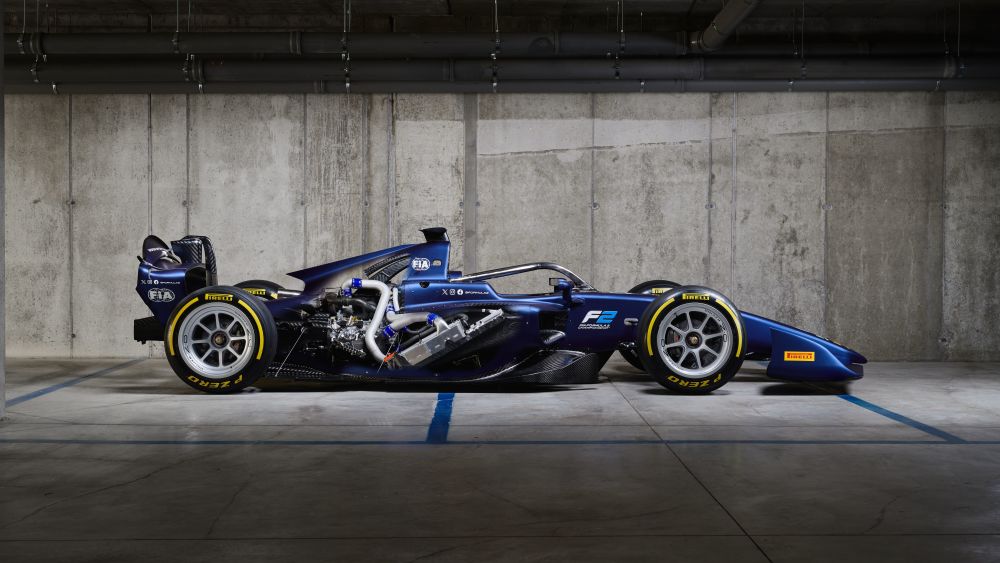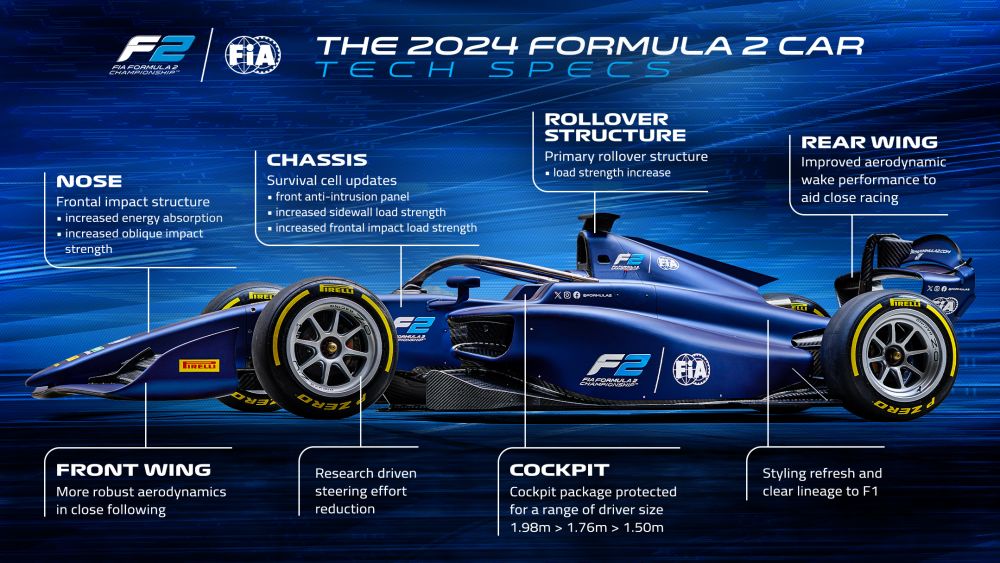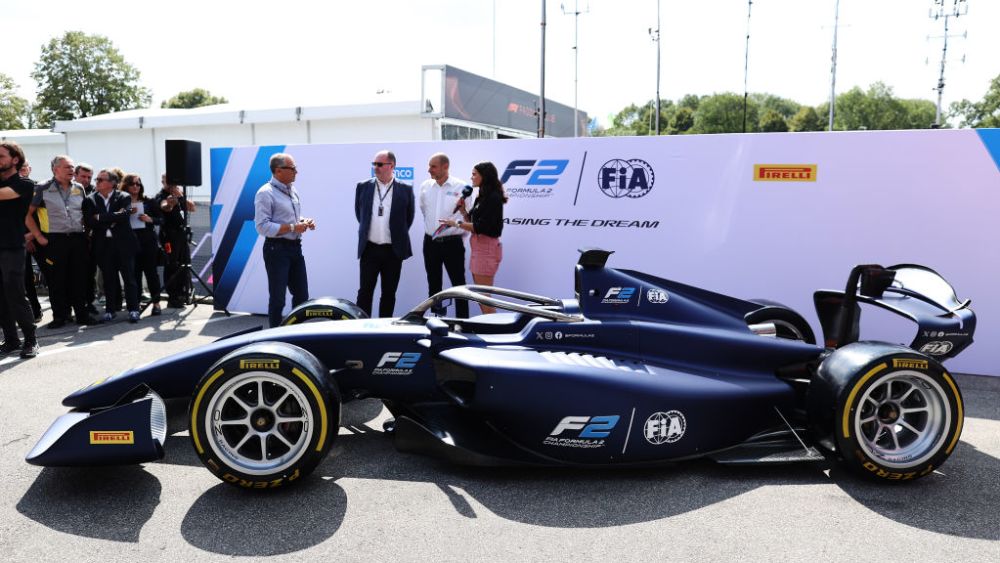Interview
A closer look at F2’s next challenger

The introduction of the latest specification Formula 2 car has caught the eye at Monza. Built to resemble the current generation of Formula 1 car closely, the F2 2024 machine has made advances in safety, performance, aesthetics and internal systems, with the goal of making racing exciting for the F1 community and motorsport fans.
Holding an integral role in the formation, development and realising of the new F2 car, Formula 2 Deputy Technical Director Pierre-Alain Michot explains the original concept of the latest F2 machine and the steps between that turned concept into full racing car.
“We started the project with the FIA in March 2022, working on the new regulations and the specification for the car. We have worked hand-in-hand to define the sporting and technical product we need for the Championship. Together, we decided the end goal and main definition of what we wanted to achieve, and then we collaborated closely with our suppliers on the project and car itself.”
Of course, driver safety is paramount in motorsport and the new F2 2024 car has made a step further in this regard. Featuring the latest safety innovations, the car is up to the very latest FIA safety standards Including the redevelopment of the roll hoop area, strengthening that particular section of car and improving driver protection.

“One of the main things was that because the current car is six years old, safety standards have evolved quite a lot. So, it was challenging for us to make sure the new car had at least the same performance with what we have now and making sure the weight was similar. I think the downforce regulations are a lot closer to the F1 philosophy now. One of the main targets was to ensure our DNA was maintained with the new car, which is to make sure we have close wheel-to-wheel racing and lots of action.
“In terms of safety, there are two aspects, the monocoque has been upgraded quite a lot so it can sustain higher loads. Cockpit safety is a big focus of the new car and the monocoque has been upgraded to the latest FIA safety standards.”
Further changes to the cockpit design along with tweaked suspension geometry means that steering effort meets new FIA 2024 specification.
“In terms of driver ergonomics, we’ve made sure that it can be driven by a driver of any stature, from the shortest to the tallest of drivers and anyone who might be involved in the Championship in the coming years.”
Formula 2 has always been the final step on the way to reaching Formula 1 and the redesigning of bodywork is the latest reflection of that pyramid. While the bodywork has been altered to more closely resemble the latest era of F1 car, there has been plenty of changes under the surface to better prepare drivers for that final graduation in their racing careers.

The latest electronic control unit from Marelli means the drivers will have the latest specification systems at their disposal in the car. The systems in place are there to help them acclimatise to having a greater degree of responsibility behind the wheel beyond wheel-to-wheel action. Utilising all the tools at their fingertips is a hugely valuable skill to carry into the technologically-focused racing world and F1 in particular.
READ MORE: FIA Formula 2 next generation car breaks cover in Monza
“Everything is new with the electronics systems,” Michot explains. “We have a specific steering wheel that enables drivers to change between different mappings, and they can go through different management systems, adapting their driving style to their needs from the cockpit.”
Sustainability is another key focus in the modern era of racing and that has been no different in the formation and creation of the latest F2 car. Already racing with sustainable fuel in 2023, Michot says the development has also incorporated key aims and targets that will be hit in the future, particularly when it comes to the introduction of synthetic fuel, a huge step for the Championship and motorsport as a whole.
Working closely with Aramco, the 2024 car will continue to use bio-sourced fuel before the switch is made to 55% synthetic fuel for 2025. The longer-term introduction of fully synthetic fuel is a key step for the Championship, and the new car has also been created with this development in mind.

“For 2023, we’re using fuel that’s 55% bio-sourced sustainable fuel and that will be the same for 2024. In 2025, we will switch to 55% synthetic fuel with a view then to graduating onto fully synthetic fuel by 2027. For that reason, the 2024 engine is an evolution of the ’23 engine in anticipation of 2025. We’re working closely with Aramco to make sure that the fuel can be accommodated to the engine, and we have that roadmap with them in place.”
It's not just fuel though that has been a focus for a sustainability push, with the incorporation of parts made from recycled carbon.
“Seven percent of the bodywork parts manufactured by Dallara will be made from recycled carbon. Generally speaking, we’ve aimed to manufacture all the safety components and bodywork of the car keeping in mind that we had to use less raw material, which is a positive move for sustainability.”
As ever in Formula 2, you can expect plenty of on-track action from the very start of the season right up to the end. The latest car enhances the performance of the drivers and teams, leading to incredible wheel-to-wheel entertainment and a Championship you cannot miss.